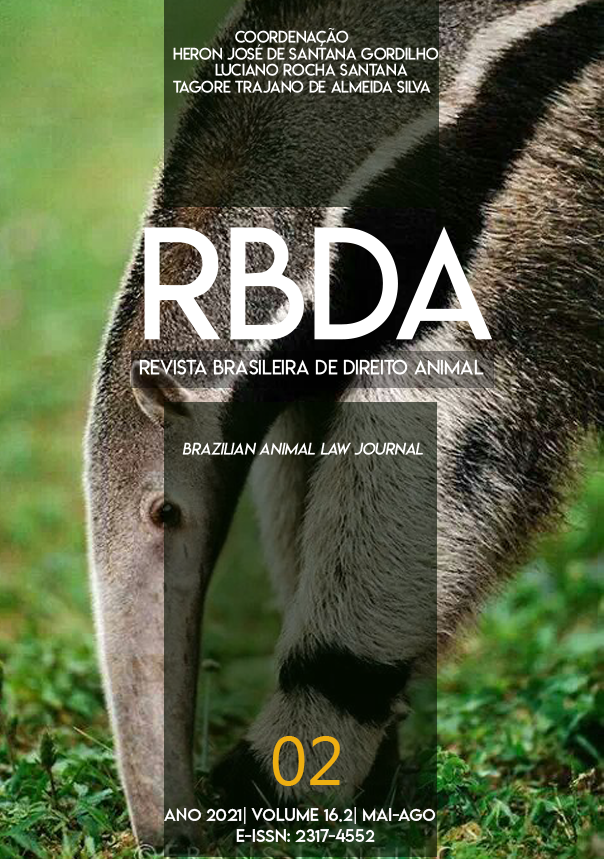LEGISLATIVE EVOLUTION OF BRAZILIAN WILD FAUNA AND (UN)PATHS OF ITS LEGAL-NORMATIVE PROTECTION
DOI:
https://doi.org/10.9771/rbda.v16i2.45654Abstract
This article aims to deal with the legislative evolution regarding the brazilian wild fauna and the paths drawn towards its real legal protection. The theme goes through since the beginning of the normative foresight of wild animals in brazil, approaching the main laws, conventions, decrees and their constitutional guarantee. Moreover, it will also explain the main discussions around the Conama Resolution 394/2007, which establishes the list of brazilian wild fauna species that can be raised and sold as pets. To this end, we used bibliographical research as a methodological procedure to achieve the proposed objectives. Therefore, it was proven that, despite some legislative advances during the course of history in favor of wild fauna, especially with regard to its classification as an asset of diffuse interest and the express prohibition of professional hunting, there are also significant setbacks, especially with regard to the loosening of punishability in matters of crimes against fauna and the current provision of the aforementioned Conama Resolution, known as the PET List, with the risk of incalculable damage both from the environmental, health, and ecosystem points of view and the protection of animal welfare, representing a legal-normative involution.
Downloads
Downloads
Published
How to Cite
Issue
Section
License
1. Autores mantém os direitos autorais e concedem à revista o direito de primeira publicação, com o trabalho simultaneamente licenciado sob a Licença Creative Commons Atribuição 4.0 Internacional que permite o compartilhamentodo trabalho com reconhecimento da autoria e publicação inicial nesta revista.
2. Autores têm autorização para assumir contratos adicionais separadamente, para distribuição não-exclusiva da versão do trabalho publicada nesta revista (ex.: publicar em repositório institucional ou como capítulo de livro), com reconhecimento de autoria e publicação inicial nesta revista.
3. Autores têm permissão e são estimulados a publicar e distribuir seu trabalho online (ex.: em repositórios institucionais ou na sua página pessoal) a qualquer ponto antes ou durante o processo editorial, já que isso pode gerar alterações produtivas, bem como aumentar o impacto e a citação do trabalho publicado.












